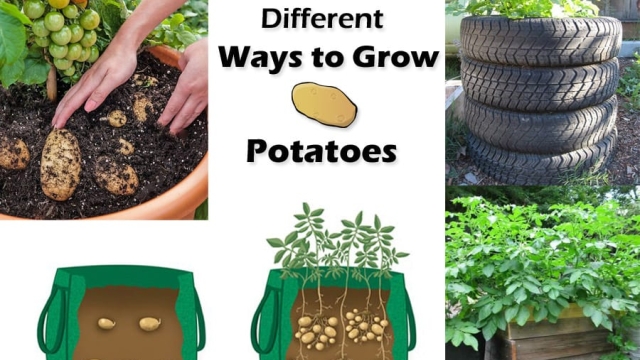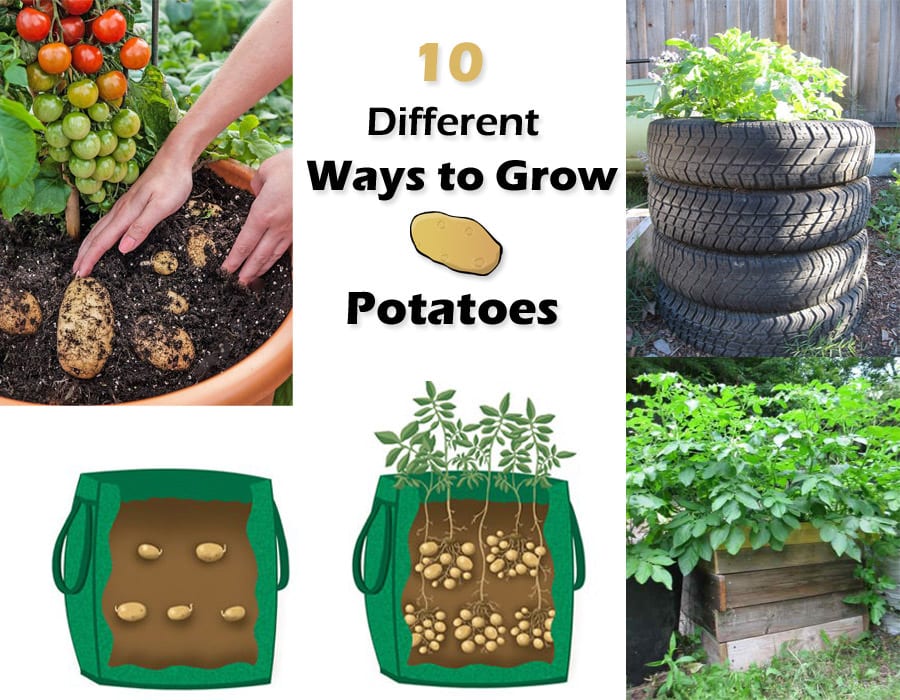
The Art of Growing Tasty Taters: Unveiling the Secrets of Potato Planting
Potato planting is both an art and a science that has been practiced for centuries. Whether you have a green thumb or are just starting your gardening journey, growing your own tasty taters can be a rewarding and enjoyable experience. From selecting the right varieties to understanding the proper planting techniques, there are secrets to unlocking a successful potato harvest that are waiting to be unveiled. In this article, we will delve into the fascinating world of potato planting, exploring the tips, tricks, and techniques that will help you grow healthy, flavorful potatoes right in your own backyard.
When it comes to potato planting, one key aspect to consider is the choice of varieties. With so many options available, selecting the right potato variety can make all the difference in the taste and texture of your harvest. From the classic Russets to the colorful Purple Peruvians, each variety has its own unique characteristics. Additionally, considering the climate and soil conditions in your region can further guide your selection process. By choosing varieties that are well-suited to your specific growing conditions, you can ensure a successful potato harvest and enjoy the fruits of your labor.
Another secret to successful potato planting lies in understanding the concept of companion planting. Certain plants have a beneficial relationship with potatoes, helping to improve their growth and flavor. For instance, planting potatoes alongside beans or peas can provide nitrogen-rich soil, which is essential for healthy potato development. Similarly, the presence of marigolds can deter pests that may harm the potato plants. By strategically selecting companion plants for your potato patch, you can create a harmonious and fruitful garden that maximizes the potential of your potato crop.
So, grab your gardening tools and get ready to unlock the secrets of potato planting. From choosing the right varieties to implementing companion planting techniques, we will guide you through the steps to growing your own delicious and bountiful potato harvest. With a little knowledge and a whole lot of love for gardening, you’ll soon be savoring the satisfaction of homegrown, tasty taters straight from your own backyard.
Choosing the Right Potato Varieties
When it comes to growing tasty potatoes, selecting the right potato varieties is crucial. Different varieties offer unique characteristics in terms of taste, texture, and suitability to specific growing conditions. Here, we will discuss three factors to consider when choosing the perfect potato variety for your garden.
Firstly, think about your preferred taste and culinary needs. Some potato varieties are prized for their ability to make crispy fries, while others are better suited for mashing into creamy goodness. Determining how you plan to use your potatoes will help guide your selection. If you enjoy making homemade French fries, a high-starch variety like Russet would be an excellent choice. On the other hand, if you love creamy mashed potatoes, a lower-starch variety like Yukon Gold might be more suitable.
Secondly, consider the climate and growing conditions in your area. Different potato varieties have varying preferences when it comes to temperature, soil type, and sunlight exposure. For cooler climates, early-maturing varieties like Red Norland or Kennebec are ideal as they can be harvested before the heat of summer. If you live in a warmer region, look for heat-tolerant varieties such as Purple Majesty or All Blue. Additionally, take note of the soil quality in your garden. Some potatoes thrive in well-draining soil, while others can handle heavier or clay-like soils.
Lastly, explore the concept of companion planting. Certain plants grow well together and can benefit each other when planted in proximity. When selecting potato varieties, consider companion plants that can help deter pests or improve soil health. For example, planting marigolds near your potatoes can help repel harmful insects. Beans and peas, with their nitrogen-fixing abilities, can enrich the soil and provide extra nutrients to the potato plants.
By taking into account your taste preferences, climate conditions, and companion planting possibilities, you can choose the perfect potato varieties for a successful and flavorful potato planting season. Keep these factors in mind as you embark on your potato-growing adventure. Happy planting!
Companion Plants for Healthy Potatoes
When it comes to potato planting, choosing the right companion plants can play a significant role in promoting healthy growth and warding off pests and diseases. Here are a few suggestions for companion plants that can be beneficial when planting potatoes.
- Beans:
Kellogg Organic Soil
Beans and potatoes make excellent companions in the garden. Beans are known to fix nitrogen in the soil, which can provide a nutrient boost to the potato plants. In return, the sprawling potato vines help provide shade and support for the climbing bean plants. This mutually beneficial relationship can promote healthier growth for both crops.
- Horseradish:
Horseradish is a strong-smelling root vegetable that can serve as a natural pest repellent for potato plants. Its pungent scent deters pests like the Colorado potato beetle, effectively protecting the potatoes from infestations. Planting horseradish near your potato patch can act as a natural defense mechanism against these common potato pests.
- Marigolds:

Marigolds are well-known for their ability to repel harmful insects and nematodes. These vibrant flowers release a strong fragrance that deters pests, such as aphids and root knot nematodes, which can damage potato plants. Planting marigolds as a border around your potato beds can help protect them from these destructive pests.
By incorporating these companion plants into your potato planting strategy, you can enhance the overall health and productivity of your potato crop. Remember to consider the specific requirements and growth habits of each companion plant to ensure a harmonious and beneficial relationship in your garden.
Best Practices for Successful Potato Planting
When it comes to successful potato planting, following a few key practices can make a world of difference. Here are some tips to ensure your potato crop thrives.
Selecting the Right Potato Varieties:
Choosing the right potato varieties is crucial for a successful planting experience. Different varieties have different traits, such as taste, texture, and resistance to diseases. Consider factors like your growing conditions, desired harvest time, and intended use of the potatoes (e.g., boiling, baking, or frying) when selecting the varieties to plant.Preparing the Soil:
Preparing the soil properly is essential for optimal potato growth. Start by clearing the planting area of any weeds or debris. Then, loosen the soil and incorporate organic matter, such as compost or well-rotted manure, to enhance its fertility and improve drainage. Potatoes thrive in loose, well-draining soil, so make sure to break up any clumps and remove rocks or compacted soil.Companion Plants for Potatoes:
Companion planting can play a beneficial role in potato cultivation. Certain plants can act as natural pest deterrents, attract pollinators, or provide shade. Consider planting companion plants like marigolds, basil, or tansy near your potatoes to help keep pests at bay and create a diverse and harmonious garden ecosystem.
Remember, successful potato planting requires attention to detail and the right approach. By selecting the right potato varieties, preparing the soil properly, and incorporating companion plants strategically, you can unlock the secrets to growing tasty taters in your own garden.

